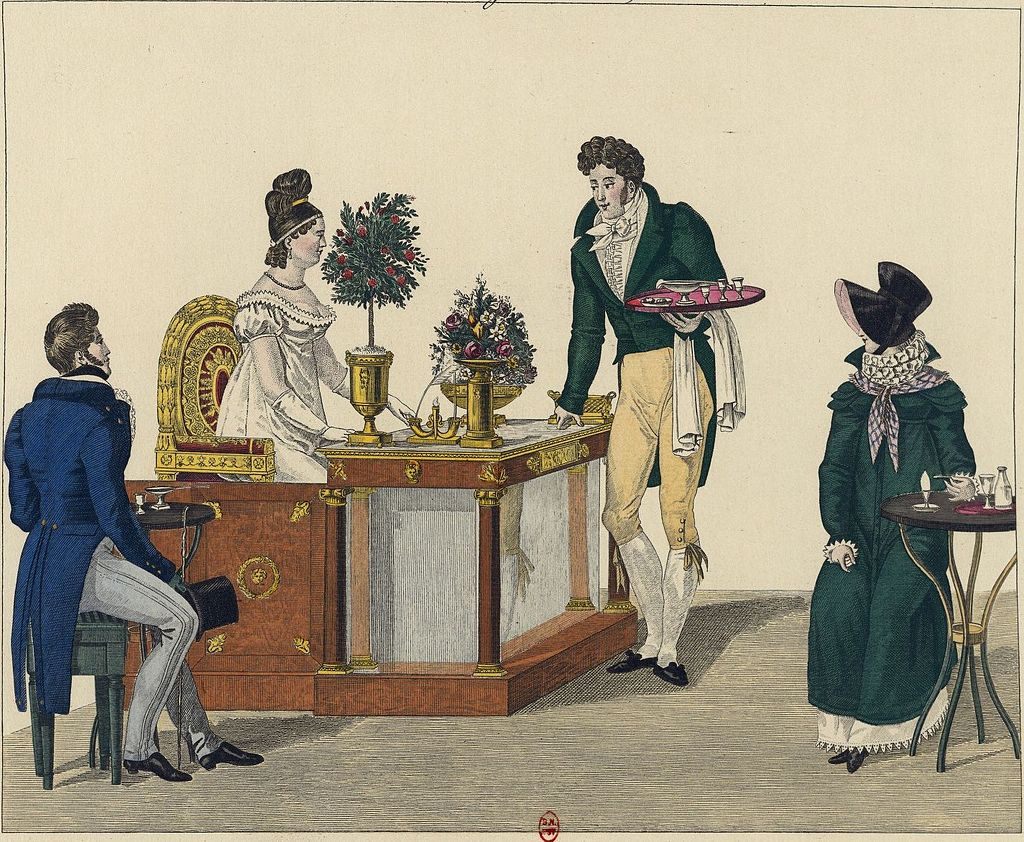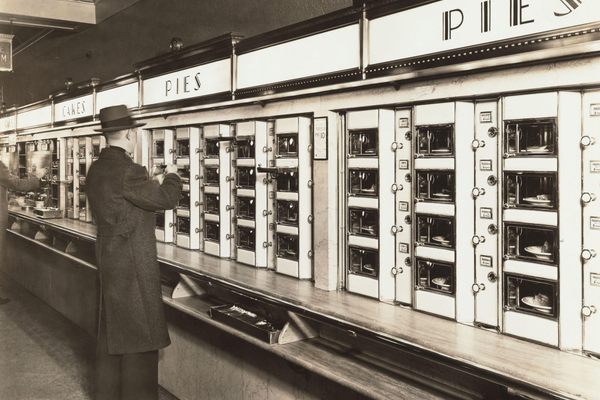The Sweet History of Lemonade
This humble drink isn’t so simple.
THIS ARTICLE IS ADAPTED FROM THE APRIL 15, 2023, EDITION OF GASTRO OBSCURA’S FAVORITE THINGS NEWSLETTER. YOU CAN SIGN UP HERE.
It’s been a cold and blustery spring so far for me, but this last weekend, I still made a large pitcher of everyone’s favorite fair-weather beverage: lemonade.
I didn’t use a recipe, and simply stirred together lemon juice, water, and sugar. This drink, though, was a far cry from the lemonade recipe I came across recently, in a slim booklet called Oxford Night Caps, published in 1827.
Considered the first cocktail book ever written, it nonetheless includes the steps to make a non-alcoholic “delicious lemonade,” by whipping together gelatinous calves-feet jelly, raw eggs, water, and the requisite lemons and sugar.
Imagining this frothy concoction made me think of all the other recipes for lemonade I’ve come across in historical and modern cookbooks. The former can include everything from eggs to sherry, while the latter sometimes advise making lemonade with simple syrup or adding zest for a more intense flavor.
Simple or expensive, boozy or dry, egg-filled or thankfully egg-free, lemonade is immensely adaptable to the tastes of the times. Perhaps that’s why it has such a colorful history: Over the centuries, lemonade has been held to be both medicinal and pleasurable, incredibly humble while also the favorite subject of master painters. Make yourself a glass, and let’s dive into lemonade’s sweet history.

The History of Lemonade
The first written mention of lemonade-like drinks comes from On Lemon, Its Drinking and Use, an Arabic treatise written in the 12th century by the physician Ibn Jumayʿ, who wrote down a number of drink recipes that included not only lemon juice, but fruits, herbs, and spices.
Jumayʿ recommended lemonade for its health benefits, and that reputation followed it into Europe, along with sugar and the lemon itself. The price of its ingredients initially reserved it for the very rich and the very sick. But refreshing lemonade could not be contained to the sickroom for long, and by the 17th century, Paris was filled with wandering lemonade vendors, who sold the drink from elaborate tanks strapped to their backs.
The first published American recipe for lemonade, in 1824’s The Virginia House-wife, involved egg whites and freezing, resulting in a delicate sherbet more than a drink. But as the century continued, lemonade became useful both politically and economically.

Pleasant enough to drink on its own without alcohol, lemonade became an emblem of the temperance movement. Lucy Webb Hayes, First Lady from 1877 to 1881, bore the nickname “Lemonade Lucy” for her refusal to serve alcohol in the White House. Plus, “portable lemonade,” a dry mix of sugar, lemon, and citric acid, could be carried by soldiers and people on the frontier, for a refreshing drink that could also hide the taste of bad water.
Bottling lemonade, an early innovation, also made for a portable, potable refreshment. But these pre-made varieties have a hard time living up to the fresh-squeezed kind—there’s an invisible timer that starts once a lemon is sliced, since oxidation strips away the juice’s delicate flavor and often leaves unpleasant bitter notes.
Perhaps that’s why we seek out summer lemonade stands. Lemonade has been sold at stands stateside since the 19th century, but only became the leading business venture for children in the 20th. Even if the lemonade served to you in a paper cup by your neighbor’s kid is a little too sour and watery, don’t forget that you’re drinking history.
The Art of Lemonade

Over the centuries, artists have painted, sketched, etched, and photographed people making and selling lemonade. Perhaps that’s an acknowledgement of how making great lemonade is an art itself (or the fact that many lemonade vendors were young, pretty women).
The Atlas Obscura team actually has its own lemonade artist on staff: In 2018, our senior editor April White wrote Lemonade With Zest: 40 Thirst-Quenching Recipes. April has some tips from around the world for making excellent lemonade that’s a few steps above your average Country Time.
1. Turkish lemonade uses the whole lemon. Grate lemon zest into the sugar and mix until it’s a sandy powder, then add it to the juice and water. Float the white, pithy shells on top. The resulting lemonade is sweet and slightly bitter (in a good way).
2. The Parisian approach to lemonade is refreshingly DIY. The citron pressé consists of three separate small pitchers of simple syrup, water, and lemon juice, which the drinker combines to their liking.
3. Sumac is a spice whose acidic notes have earned the plant the moniker of “lemonade tree.” Using sumac simple syrup in the place of sugar makes for a uniquely tangy pinkish drink. April’s recipe for sumac simple syrup consists of bringing a cup of sugar, a cup of water, and three tablespoons of sumac to a simmer on the stove, until the sugar dissolves. Let the syrup cool, then strain through a coffee filter before using.
4. In Portugal and North Africa, mazagran is an invigorating take on lemonade that includes coffee. Mix together ¾ cup of cold-brew coffee with two tablespoons of simple syrup and three to four tablespoons of lemon juice. Pour over ice.
Gastro Obscura covers the world’s most wondrous food and drink.
Sign up for our regular newsletter.


































Follow us on Twitter to get the latest on the world's hidden wonders.
Like us on Facebook to get the latest on the world's hidden wonders.
Follow us on Twitter Like us on Facebook